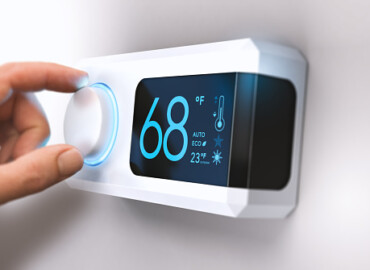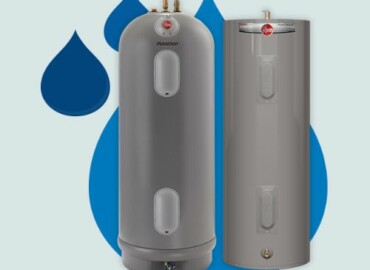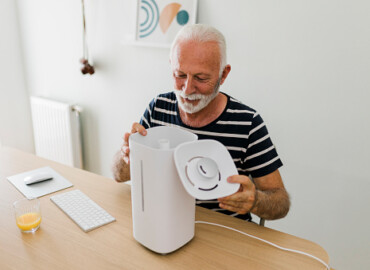What is a Heat Recovery Ventilation (HRV)?
It sounds like magic but it is not: the HRV ventilates and preheats the air in the house by extracting heat from the stale air that is exhausted. For the GTA climate, this is an optimal solution, which is now mandatory in new homes.
What is a Heat Recovery Ventilation (HRV)?
An HRV has two duct networks. One allows the extraction of stale air from the house to the outside, and the other directs the fresh air from the outside to the inside of the house. These two conduits intersect in housing, more precisely in a heat exchange core.
Whether in heating or cooling mode, this heat exchange core can heat or cool the new air. The heat exchanger is designed so that the air coming from inside never contaminates the air coming from outside. Only heat is exchanged.
Grilles are fitted to air outlets and inlets located on the outside to prevent leaves, animal hair, and other debris from entering the ducts. To prevent finer particles from entering the network either, make sure to install HRV and regularly change the filters
A siphon is located at the bottom of the housing. This siphon evacuates condensation water and prevents odors from rising in the HRV. Finally, a control system installed in the living room allows remote control of the house’s air renewal rate.
Fresh outdoor air is drawn in simultaneously as stale indoor air is forced out of the house. When it comes to health, the quantities must be the same to avoid an imbalance in the pressure level. It is a good idea to also install the fresh air intake and the exhaust air outlet on the same facade to be subjected to the same pressure due to the wind.
How Does Heat Recovery VentilationWork?
Distribution by an independent system of direct ducts
In this distribution system, the HRV has its own network of conduits. Stale air is extracted from rooms with the most humidity and pollutants, primarily the kitchen and bathroom. Fresh air from outside is distributed to places where there is less “activity,” such as bedrooms, living rooms, dining rooms, etc.
The HRV air distribution network shares the same structure as that of the central heating system. Air from the outside passes through the HRV and then through the furnace before being distributed to all the rooms in the house that require the freshest air. Stale air is exhausted through other ducts and passes back through the heat exchanger before being expelled outside.
Pros of Heat Recovery Ventilation
There are a lot of reasons why you should buy an HRV system. The main benefit of HRV is its potential for heat recovery and lower heating costs. This is why it is used so much in Toronto.
Residents of a home with an HRV will be less worried about permanently turning it on in the winter, knowing that 60 to 80% of the heat will be recovered. The continuous operation will increase the efficiency of the unit and improve air quality.
Cons of Heat Recovery Ventilation
This type of ventilator – the HRV – is among the most expensive ventilators on the market.
Like central ventilation without recuperation, an investment of time and money is required for HRVs to be correctly maintained and installed. Deficiencies at this level will cause a supply of contaminated air. The consequences will be similar if it is misused.
If the device is poorly chosen and incorrectly installed, which happens too frequently, the noise generated will be an inconvenience for residents. Follow the best practices coming next in order to avoid these problems.
How to Take Care of Your Heat Recovery Ventilation
Equipping an HRV in your home is an excellent idea for several reasons. Be aware that polluted air accumulates quickly in your home due to humidity changes caused by various human activities. Fortunately, such pollution is regulated by an air exchanger. Indeed, it purifies your air, and its quality by renewing it, essential elements to perpetuate your comfort and health at home.
So, by removing the unclean air and introducing a new airflow from the outside, your health can only get better. However, what happens when the HRV starts to age or no longer does its job correctly? Imagine that ventilation is only 75% in your home. Replacing your room air is essential if you’re going to stay healthy and be able to enjoy your comfort.
This controlled supply of pure air, which simultaneously expels polluted air, removes all human pollutants such as radon, bad smells, cooking or tobacco smoke, humidity, solvents, and vapors emerging from cleaning products, formaldehyde, etc.
If you use your fireplace for heating or cooking with natural gas, oxides of nitrogen and carbon dioxide are produced. They must be discharged outside, or there are worrying dangers to the environment. Health.



